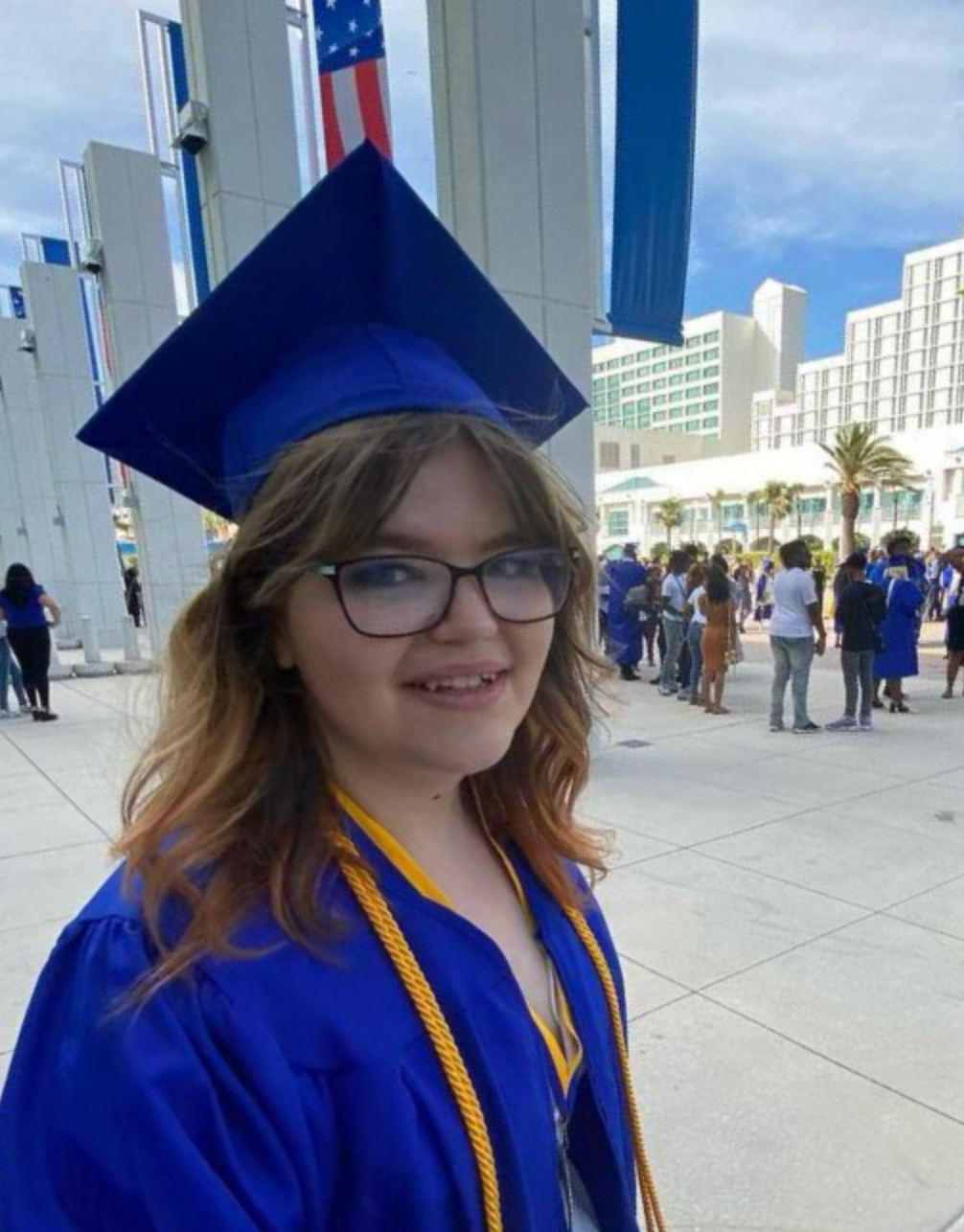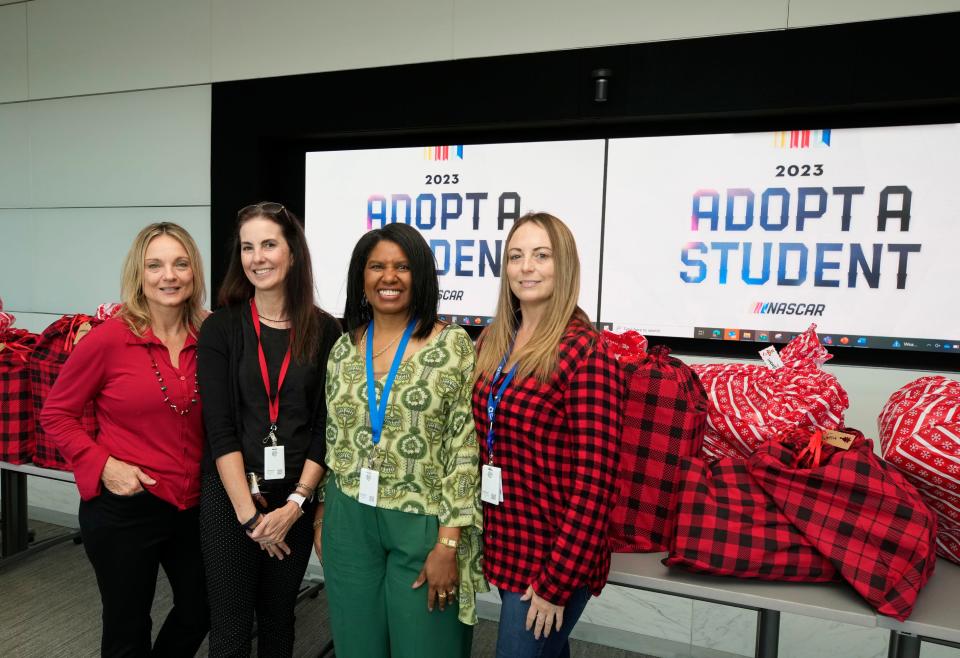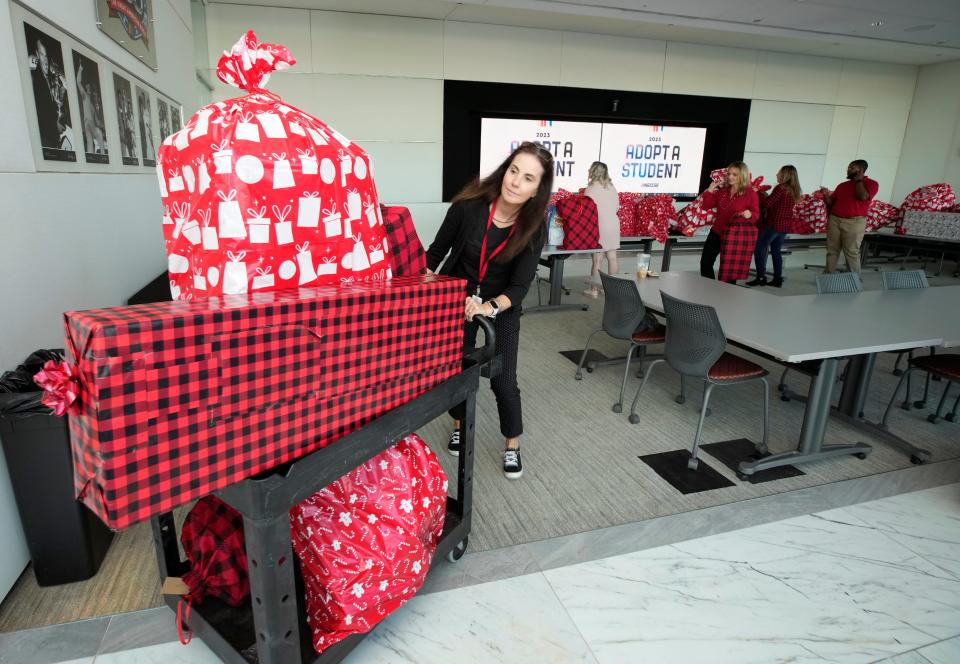Volusia's 'invisible population': Advocates help homeless high school students get on track

Summer Snow was homeless for almost the entirety of her senior year in high school, couch-surfing between her best friend’s house and her ex-boyfriend’s house from October 2022 until May 2023.
She became an "unaccompanied youth" in February 2023 — meaning she started living independently without a parent or legal guardian — because, she said, her "mom wasn’t really taking care of me.”
Yet somehow, the Volusia County native managed to graduate from Mainland High School in June and start classes at the University of North Florida in Jacksonville that same month.
But she had help.

In the first semester of her senior year, she met Lauren Hogan, a student advocate for Volusia County Schools’ homeless education program known as PETALS (People Experiencing Transition and Loss of Shelter).
Hogan is one of three student advocates working across 13 Volusia County high schools. They are certified by the University of Minnesota’s Check and Connect, an evidence-based mentoring intervention program designed to stimulate student success and engagement at school.
The advocates check students' grades and course performance, track their attendance, and communicate with their teachers and counselors. They strive to support students, helping them bridge the gap between graduating high school and determining next steps.
One misconception concerning this population, according to Snow, is that they don’t care about school or their academic future. She can almost understand where the misbelief stems from, noting that, “If you can barely even give yourself shelter and food, then how do you have the energy to do well in school?”
But Snow said some of her most driven peers were also facing some of the most complex barriers.
“Even when kids at my high school were experiencing similar things or maybe even worse things than me, there’s still a sense of resiliency that they still showed up to school every day, and they still did all these extra tests and assignments,” she said. “Going to AP classes while you’re a homeless student is kind of insane to me, but me and other kids did it at my school, and that makes me very proud of my school and the program.”
Defining Volusia’s homeless student population
Volusia County Schools identified 3,007 students who experienced homelessness at some point during the 2022-23 school year.
According to the National Center for Homeless Education, the McKinney-Vento Homeless Assistance Act defines homeless children and youth as individuals who do not have a fixed, regular and adequate nighttime residence.
This includes those who meet the following criteria, according to NCHE:
They share housing with others because they lost their housing or face economic hardships. They live in motels, hotels, trailer parks or camping grounds because they have no other options. They live in emergency or transitional shelters or are abandoned in hospitals.
Their primary nighttime place of residence is a public or private place not typically used or designed for sleep.
They live in cars, parks, public spaces, abandoned buildings, substandard housing, transportation stations, or a place of a similar nature.
They are classified as a migratory child.
Jennifer Watley, Volusia's homeless liaison, said most families have shelter, whether it be a hotel, car, or shared living arrangement. But many families lack "adequate" housing.
“If you have a multi-generational family living in a one-, two-bedroom house with one bathroom, and there’s 10 people living in that house, that address might be fixed and regular, but it doesn’t meet the part of the definition that is adequate,” she said, “because 10 people should not be sharing one-bathroom and a two-bedroom house.”
Watley described this population of students as the “invisible population” because so many hide directly in plain sight.
“Truthfully, they really are hard to spot and hard to see because they, the families, work very hard,” Watley said. “They’re proud, and they're not out on the street corners panhandling or anything like that. A lot of the families work. A lot of the moms have full-time jobs, and … they just don’t have enough."
She also pointed to a lack of affordable housing.
Of the 3,007 students experiencing homelessness last school year, according to the district, 233 were identified as unaccompanied homeless youth.
“I definitely was shocked when I found out how many other students were experiencing the same thing I was,” Snow said. “You’re expecting that it’s so unusual, that other people were not going through the same things you are because it’s such an extreme circumstance.”
How PETALS helps Volusia County's homeless students
Volusia County Schools has had a homeless education program since 2005, but it wasn't branded with the PETALS acronym or logo until 2018.
Watley leads the three student advocates — Hogan, Dee Stevenson and Becky Pitchford. They meet students where they are, prioritizing a hierarchy of needs.
“Without those basic needs being met, they’re not going to be able to achieve those other levels of the pyramid,” Watley said. “We want to make sure that the kids have a warm place to stay and that they have food and that they have clothes and access to … showers and things like that. And then move up from there onto the other levels and, you know, start addressing attendance, start addressing their education, grades and things like that, but until those basic needs are met … it’s foolish for us to think that they’re going to achieve in school because they likely won’t.”
Pitchford said that evaluating and assisting with students’ varying needs can be challenging. But the unpredictable nature of her work keeps her going.
Last year, for example, she worked with an 18-year-old senior who was living in a car with a 6-month-old baby. It looked like the girl was going to drop out, but Pitchford helped get them into housing and the girl into school.
“We’ve also got students that are homeless and are very academically motivated, … and they’re all tenacious in spite of their circumstances," Pitchford said. "But I spent almost a whole period with a student yesterday, a senior. … He is slated to graduate (and) was slated to graduate before I started working with him last year. He’s wanted to be an electrical engineer, and he’s just been on that course, and it’s amazing how innately the human spirit is that in spite of circumstances, we still have some that are just so resilient.”
Pitchford worked with that student to create a plan to apply to schools, complete financial aid applications and obtain a computer he could use after high school.
“He left with his homework. I left with more homework for myself to do, and you know, so we kind of go through that process with them to set them up for success,” she said. “They’re all different.”
The PETALS program focuses on dropout prevention and graduation assurance. Advocates work mainly with high school juniors and seniors since they don't have adequate time or resources to support freshmen and sophomores. Watley explained that the need for this program is deep and that she could genuinely benefit from additional advocates.
“We could really be catching those kids in ninth and 10th grade because what happens is a lot of times because this population moves around so much … once they get to high school, they’re often behind,” she said. “Sometimes we have … a freshman in high school with no credits, and they feel pretty despondent and just kind of giving up, and they really could use the support as well. … There’s just too many kids (and) just not enough of us.”
Watley said that middle-schoolers are lacking the support they need almost entirely.
“Middle school is hard enough as it is. I think that those kids could really use somebody as well,” Watley said. “If we had eight total — a middle school team and (a) high school team — that would be perfect.”
So why aren't there more of them? Funding, according to Danielle Johnson, the district's director of community information. Thanks to the success of the high school program, Volusia Schools explored the possibility of expanding the program to middle schools.
"Unfortunately, the special funding received under the American Rescue Plan Grant to support these current positions is coming to an end and is a non-renewable funding source," Johnson said in an email. Fortunately, other funding was secured.
"The district continues to seek alternative funding sources with the hope for future expansion needed to serve this ever-growing population of Volusia County students," she wrote.
Shelter is 'biggest obstacle'
A larger problem for unaccompanied, homeless 16- and 17-year-olds is housing. Many shelters require parental permission to serve kids that young, so community resources are lacking.
“It leads for a scary day, even for us because we’re unsettled for them. We know they’re unsettled,” Pitchford said. “It’s not a situation that we like by any means because our hands are tied in a lot of ways.”
The PETALS program has considered implementing a host family program to help limit these barriers, but no decisions have been finalized.
“Sarasota County has a cool program in place where it’s totally funded off of donations, and they have host families that partner with the school district and provide shelter to these kids that are identified,” Watley said. “We’ve been talking with other counties to see what they do, but we … as a district, as a county, have not come up with a solution to this as of yet.”

Prioritizing community involvement
In addition to serving as a consistent support for students, PETALS advocates also collect donations — school supplies, clothing and digital devices, among other things — and raise funds so students can purchase basic necessities like food and gasoline and also participate in fun activities like school dances and extracurricular activities.
The PETALS program launched a Facebook page in September for community members to donate goods that advocates request.
The program also has various partners from across the county, one of which is NASCAR. On Dec. 13, 2023, advocates picked up gifts for 31 students that NASCAR employees volunteered to sponsor over the holiday season.
“It makes my heart happy because I love, love, love doing things with kids, and I’m so happy that NASCAR has an opportunity to pour back into the community and do things for kids that are disadvantaged and you know, through no fault of their own, but then have an opportunity to receive some sort of happiness from NASCAR,” said Tyrese Manigault, NASCAR’s manager of employee engagement and human resources.
PETALS also partners with Gabrielle Golka, an administrative assistant with St. Ann’s Catholic Church in DeBary and a guardian ad litem for a current PETALS student.
Professionally, Golka works in collaboration with Pitchford to provide continual resources to PETALS students at the high school level. In early December, she arranged for church parishioners to provide 27 students with large holiday gift baskets of toiletries, gift cards for food, undergarments and socks.
“Especially for these kids,” Golka started, “they haven’t chosen the situation they’re in, and we need to do everything we can to help them provide their lives for themselves, and what I’m hoping is that some of these kids, when they are older and hopefully are in a better place and their lives are more stable and consistent, that they can look back and maybe pay it forward for somebody that was in their shoes.”
This article originally appeared on The Daytona Beach News-Journal: Volusia Schools' homeless population no match for district's 3 advocates

